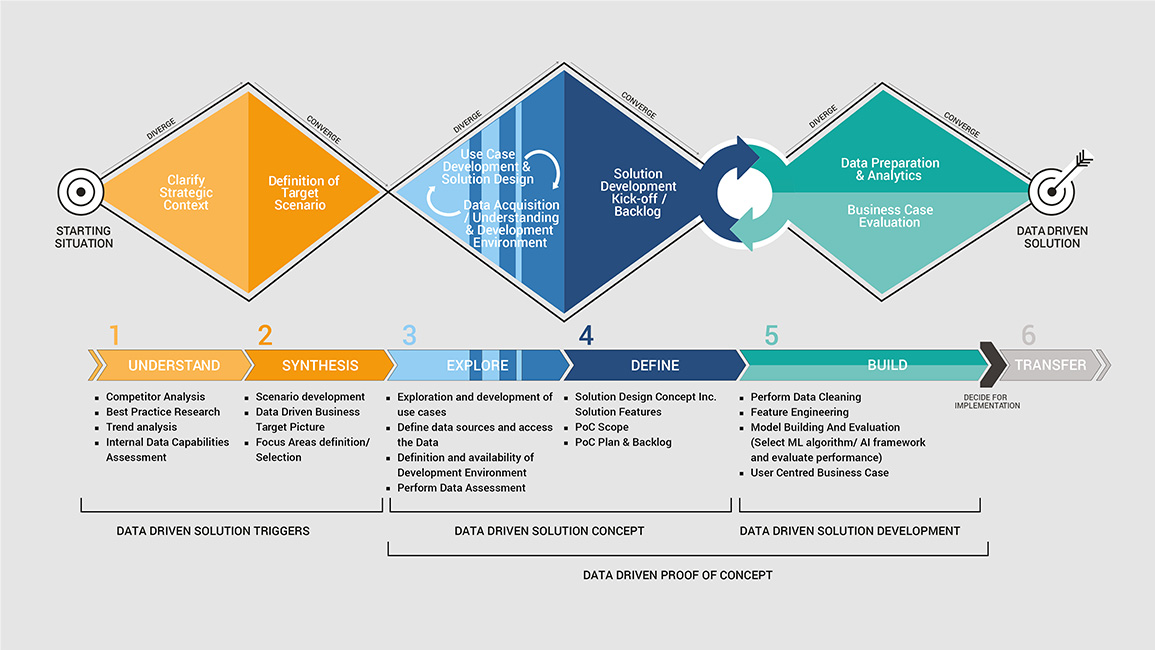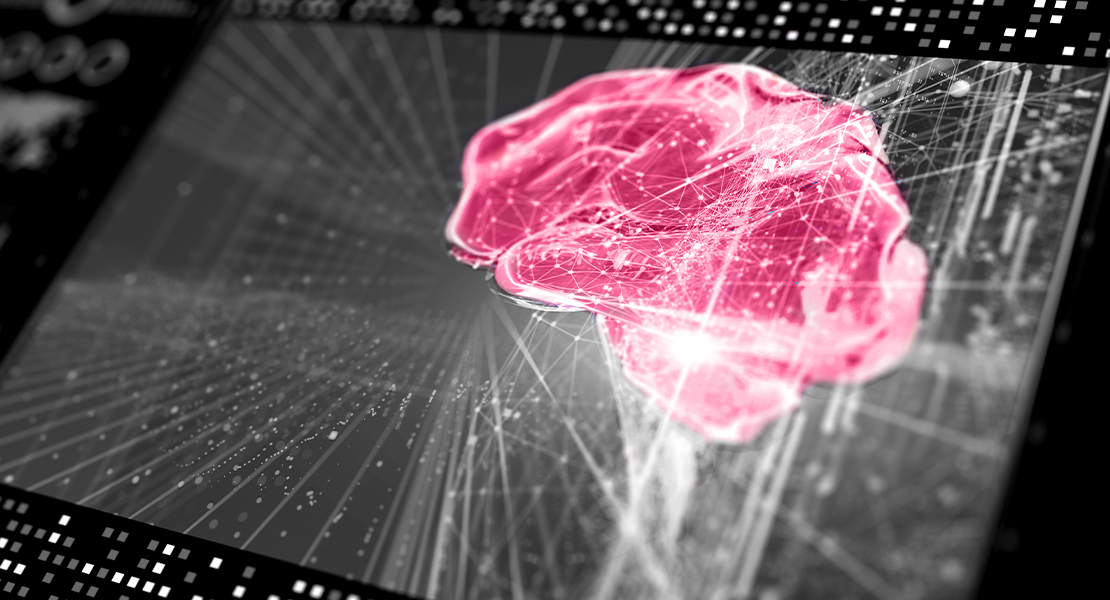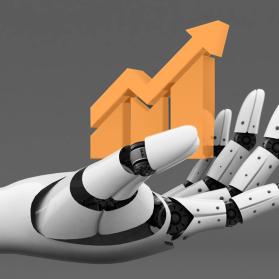As was claimed in the recent study by eco Association of the Internet Industry AI solutions offer enormous potential for Germancompanies: in 2025, thanks to AI, companies should save around 330 billion euros in costs and generate 150 billion euros more revenue than in 2019. According to a Lünendonk® study, four out of five companies believe that AI will disruptively change their industry. But Gartner has found that 60 percent of Big Data projects do not make it beyond their pilot and experimental phase. What are the major reasons for that?
Already in 2014 analyses by Capgemini as well es research by Forrester (2017) showed that poor data quality/availability and difficulties in finding employees with good data analytics and AI skills are often reasons for the failure of data-driven projects. Something that is neglected by companies, but contributes significantly to the failure of the solution, is insufficient clarification of the business impact. Often companies do not clearly define what AI can be used for and how to precisely achieve this goal. Detecon (2019) confirmed in its survey of approximately 100 AI/IT/business experts that the two main reasons for the failure of data-driven projects are insufficient clarification of the business impact and user needs.
What is Data Thinking?
Business impact and data science, both sides are fundamental for success these days. Thus, the Digital Engineering Center at Detecon developed and tested an innovative approach: Data Thinking. This novel framework combines Data Science with Design Thinking and therefore, the focus does not only lie on data-analytics technologies and data collection but also on the design of use-centred solutions with high business potential. Furthermore, our framework incorporates the major principles of agility.
Data Thinking applies design thinking methods to identify customer needs and creative ways to find new solutions to meet data-driven challenges. In parallel, the framework contains structured and established methods for the development of data solutions from data mining approaches such as CRISP-DM (Cross-industry standard process for data mining). Agility helps to be efficient in collaboration, flexible during the development process and to move fast towards the stated goals.

Phases of Data Thinking Process
Identify Data Driven Solution Triggers:
1. Understand: Clarification of a strategic context
You want: to understand your level of digitization in comparison to main competitors and technology leaders today and/or in the future.
You get: a handful of insights about your internal digitalization status as well as your external standing today and a clear view on the future digital trends.
Methods (selected):
- Trend Radar
- Creative Briefing
- STEEP Framework
- Competitor Analysis
- Benchmarking (ex. SWOT)
- Internal Data Capabilities Assessment
2. Synthesis: Definition of a target scenario
You want: to identify the most promising areas in your company to be changed via data (analytics) in order to stay stable and outperform others today and/or in the future.
You get: an analysis of your external and internal digitization position to derive a data driven business target picture with biggest gaps and opportunities today and/or future scenario building to be prepared for tomorrow.
Methods (selected):
- Bipolar Factors
- Scenario Matrix
- Scenario Stories
- User Centered Scenario Modelling
- Target Picture Roadmap & Roadmarkers
Design Data Driven Solution Concept:
3. Explore: Use Case Development & Solution Design / Analysis of Data and Development Environment needed and available
You want: to explore promising digitization areas and to conceptualize the most suitable data-driven solution for them.
You get: creative ideation sessions, workshops, and in-depth analysis in cross functional teams to form the best data solution for your need, a clear understanding on data you have and data you require, and the setup of the development environment.
Methods (selected):
- Ethnographic research Storyboarding, Storytelling
- Use case ideation templates, Personas, “Point of View”, Empathy map
- Process mapping and digital proses re-design
- Architecture cross check / development of architecture blueprint (if applicable)
4. Define: Solution Development Kick-off / Filling of the Backlog
You want: to put all information about the use case idea, data, and development environment together, decide about the scope of the Proof of Concept and create a clear plan for implementation.
You get: the development of the Solution Design Concept in cross-functional teams including definition and prioritization of the solution features to clarify the scope and the development plan including filling of the backlog.
Methods (selected):
- RACI-Matrix
- Scrum Backlog
- KanBan & Roadmarkers
- Project Development Matrix
- Data Driven Solution Template
- Development Road Map Template
Data Driven Solution Development (Proof of Concept) and Business Impact Evaluation:
5.1 Build: Data Preparation & Analytics
You want: to prove if your data idea will deliver the results you have expected or can be used such the expected results are achieved.
You get: support in data preparation and feature engineering followed by selecting a suitable machine learning algorithm and its performance optimization.
Methods (selected):
- Data Science Orchestra:
- T-SNE, PCA, Neural Networks
- Hyperparameter optimization
- H2O, TensorFlow, Sklearn; PyTorch, other AI/Machine Learning packages
5.2 Evaluate: Business Case Evaluation
You want: to know if the future investment will be covered by the benefits after implementing the solution.
You get: a realistic cost & benefits analysis.
Methods (selected):
- Business Model Canvas
- Business Case Calculator
- Cost and benefits analysis
6. Decision for implementation and transfer for operationalization
After the developed solution was tested and its technical feasibility as well as business impact was confirmed it can be transferred for implementation.









